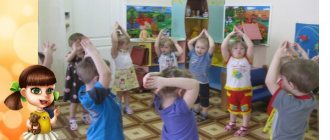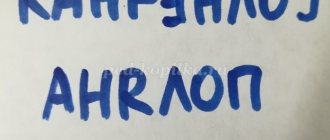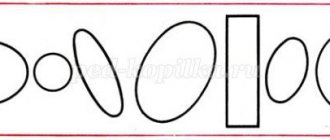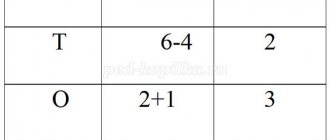Reconciliation with Federal State Educational Standards
In fact, violating the regulations of federal state educational standards is much more difficult than it seems at first glance. If a teacher has experience working in a preschool educational institution, then most likely he intuitively understands what can be done and what cannot be done. If the quest is being developed for an expert commission or an open lesson, then it is better, of course, to print the regulations from the official website of the Federal State Educational Standard.
But in any case, we should not forget that children in kindergarten are still too young to seriously study any sciences. In accordance with this, it is necessary to structure all pedagogical activities (like any mathematical quest in the preparatory group) in the kindergarten in such a way that the kids do not get tired and begin to dislike the exact sciences, which they will begin to study very soon at school.
Mathematical quest - a game in kindergarten in the senior group
Mathematical quest game “Tricks of the insidious Villain” (lesson notes).
Senior group Goal : creating a social situation for the development of children while solving game search problems. Objectives: 1. Creating conditions for involving each child in an active cognitive process.
2. To promote the development of interest, creativity, imagination of preschool children, search activity, and the desire for novelty; promote tolerance and personal responsibility for doing work. 3. Creating conditions for consolidating the skill of quantitative calculation; Solving arithmetic examples involving addition and subtraction. 4. To promote the development of initial measurement skills in children, to measure the volume of liquid substances using a conventional measure. 5. To promote the development of children’s creative imagination in the process of finding ways to manifest “invisible” ink, using magnets. 6. Improve children’s ability to solve simple arithmetic problems, including addition and subtraction within 10; creating an image of a number from a soft stick. 7. Creation of conditions for the distribution of counting sticks in space in order to obtain the desired image. Progress of the lesson
When airing, the teacher informs the children that today they will have a real surprise, which they have all been waiting for so long.
A container appeared in the group, containing probably 10 boxes of LEGO people, for girls and boys. Offers to go see what's in the container. In the group there is a container locked with a combination lock. There is a letter nearby/an audio recording is heard: “Well, kids, hello everyone. How cool it was to lock your LEGO people with my combination lock! If you want to get little people, then you will have to work hard. You need to find a code for the lock. And this is not at all easy to do! Each digit from the code can be obtained by completing my tasks! I completely forgot, I hid all the tasks too! Look for them using the clues! Here's your first hint! It’s on the third guest’s right.” The children count the third guest on the right and ask him for a hint. Children open the envelope, and there is a white sheet of paper. Educator: Guys, what are we going to do? The villain is just mocking us. We'll probably never figure out the code. What if there really is a clue on this sheet? Children: Maybe this sheet is written in invisible ink? Educator: how to check this? Children's options. The teacher and the children go to the table and use pencils to color the sheet, and the word “Chair” begins to appear on it. Educator: It says “Chair”, so what could it mean? Children: let's examine the chair. They examine the chair and under it they find an envelope containing the task . In front of you lies a tray with buckwheat, your task is to get examples with encrypted letters from the tray, solve the example, find out the serial number of the letter and decipher the word. But the main condition of this task is that you cannot touch the buckwheat, since the villain poisoned it.
(a magnet is glued to each card) / examples by the number of children
Educator: Guys, what do you think, how can we get the cards from the tray without touching the buckwheat? Children's options. Children: Let's use a fishing rod with a nail. Educator: How can this help us? Children: The carnation is attracted by a magnet, so we won’t touch the buckwheat and take out the card. Educator: Let's try. They complete tasks, take out cards, solve examples, put out letters and get the word TABLE. They inspect the table and find 2 envelopes under it - in one there is a flash drive, in the second the number from the code is 1. The children and the teacher agree to add up the numbers from the code in the order they were received, so as not to get confused (next to the container). Educator: And where is the next task? Children: Probably the next task is on a flash drive. Let's connect it to the computer. Connect the flash drive. They watch a video fragment: children from the older group ask for help solving problems and showing the answer in numbers using a soft stick. The teacher reads the problem from the screen, the children solve it, bend the stick, and test themselves using a test answer. Educator: 1. Egorka is lucky again, it’s not in vain that he sits by the river. Two crucian carp in a bucket and four minnows. But look - at the bucket, a sly cat appeared... How many fish will Yegorka bring home to us? (0) 2. Once four guys rolled down a hill. Two people are sitting in a sled, How many have fallen into the snow? (2) 3. There are seven plums on a plate. Their appearance is very beautiful. Pavel ate four plums. How many plums did the boy leave? (3) 4. Three fluffy cats lay down in a basket. Then one came running to them. How many cats are there together? (4) 5. The chicken went out for a walk. I took my chickens. 7 ran ahead, 3 remained behind. Their mother is worried and cannot count. Count it, guys, how many chickens were there? (10) 6. Fishermen are sitting, guarding the floats. Fisherman Korney caught three perches. Fisherman Evsey - Four crucian carp. How many fish did the fishermen bring from the river? (7) The children of the older group thank the guys and say: “Thank you, guys! You helped us a lot. Here’s number 1. If you need the next clue, it’s in this shape!” Show the cylinder. Children look for a cylinder in the group. They find counting sticks in it. Game task with counting sticks. (if necessary, you can divide into teams using 3 properties of the object: wood, paper, plastic) • We will take 6 sticks and build a new house! • If 2 are shifted, they will not be able to live in that house, It is no longer a house, but a flag. Who can do this? • If you want to dig, you need to remove the stick and put it in another one. So I'll get the spatula! • Is it ready for you? Let's move the stick again, and take 1 at the bottom and put it in the box! The chair is out! Relax! How many sticks? Do you count? • Did you count? There are 4 of them! Spread your legs wider, put the backrest down - the chair will serve as a table! • If you're not tired, let's continue our work: Let's make a road sign or a triangular flag. • 2 were shifted again, and we got the arrow! • Only the arrow broke - only the stick remained! We put it on the table - we can make a triangle!
Educator: Guys, where to look for the next clue? Look around, maybe there is something lying where it shouldn’t be? The children look around and see a towel. It is believed that the next clue may be somewhere in the sink. They go looking. Find 2 envelopes (with a number for the code and the next task). At this time, the sound of gas being released is heard in the group. Educator: Guys, we urgently need to complete the next task , the villain released a sleeping gas, from which we will soon fall asleep and will not have time to open the container. Instructions:
In this task you need to make an antidote for sleepy smoke.
(In front of the children on the table there are 2 transparent glasses, 1 transparent vase, sunflower oil, a jug of water, salt, an asprin-upsa tablet, gouache) 1. Take one glass, pour 1/2 part of water into it. 2. Pour 1/3 of the sunflower oil into the second glass. 3. In a glass of water you need to add so many spoons of red paint so that there are less than 3, but more than one. 4. In a glass of water you need to put as much salt as you get in the end: 5 – 3 =__ + 1 = __ + 4 =__ – 5 = __. 5. Pour the water into a glass container. 6. Take a cone and pour oil through it. Educator: Guys, there is no cone here, what are we going to do? Children: Let's make a little bag out of a sheet of paper, it looks like a cone, and with its help we will pour oil. 7. You need to add tablets to the resulting mixture, and you need to put as many of them as there are mornings in a day. Educator: Here is our antidote and it’s ready. But we need the last digit for the code. Where to look for it? Children's assumptions (What was the last thing mentioned in the instructions for the antidote? About morning. What is morning? Time of day. And where does the time of day mark? On the nature calendar). Educator: Well, our code is assembled.
It's time to open the lock. Children select the code for the lock, and the teacher conducts reflection, asking which task was easy and which was the most difficult; what did you like? What didn't you like? Download Mathematical quest game “Tricks of an insidious Villain”
Related posts:
Mathematical game relay race for students in grades 5-6 DIY wall newspaper for parents in kindergarten Quest - a game based on Russian folk tales for children 4-5 years old Friendship Week in kindergarten in the middle group
Similar articles:
Methods for early teaching children mathematics
Poems for teaching children to count
Geometry assignments for preschoolers 5-6 years old in pictures
Differences between quests and quizzes for senior and preparatory groups
The more adult a child becomes, the less “childish” the quest should be in his eyes. It is clear that, in fact, a 6-year-old child is not as radically different from a five-year-old as he would like to think, but he feels as if he is a whole generation ahead of this toddler! Therefore, in the older group it is necessary to modify the classic math quest.
In order to show the exclusivity and peculiarity of the elders, it is recommended to make them assistants from ordinary participants. Let the children create a few puzzles themselves; the teacher needs to talk about how such an activity is conducted, and then invite them to make their own quest. (Don't forget to warn your parents).
Note! After that, you need to lead the younger group along the route invented by the graduates, and let them have fun together.
However, unfortunately, this event will require a really large number of adults, because you will need to constantly monitor twice as many children. If the kindergarten cannot afford this, you can replace the quest with a quiz in which older children will ask questions to younger ones. The winner among the “organizers” will be those whose questions turned out to be the most difficult.
And at the end of the event, you can launch balloons into the sky, which will cause sincere delight in children
Math quest and how to do it
The word “quest” comes from the English “quest”, “goal, task”; this word is also used to mark tasks in games, both computer and tabletop. In other words, a quest is a chain of tasks presented in a game form.
Note! Such an event can be done with or without a plot.
For example, children aged 5–6 years are still interested in watching the story about Baba Yaga and Little Red Riding Hood, but children aged 6–7 years may feel a little awkward.
Then it is better to put the quest in a more “adult” form, calling it, say, “Sports Math Quiz,” or make a story where the main character will be a detective, and he will investigate the case of missing answers to questions in a test. If the institution has a projector, then a background video can be installed to create the appropriate atmosphere. In order not to waste time downloading, you can launch it online. It is precisely these nuances that distinguish truly entertaining mathematics for children from ordinary lessons.
Nothing makes an event more interesting for children than the opportunity to have fun
Important! It is necessary to understand that the quest is, first of all, an entertaining event, and the teacher must be prepared for the fact that the interest of children is more important than the quality of the information conveyed.
Mathematical classes in the second junior groups of preschool educational institutions
This is not a lesson, a test, or a test. A good math riddle for children is one in which he wanted to find the answer, but not one where the answer was complicated and boring. Also, the child must have a reason to participate in a strange and incomprehensible action. Such a reason could be a certificate or a sweet prize.
The process of creating a quest looks like this:
- Come up with a story or reason why children will have to solve certain problems.
- Divide the quest into several stages (more on this below).
- Distribute the locations, keep in mind that in order to carry out the quest efficiently, you will have to distribute the children into groups of no more than 5 people, otherwise it will not be possible to pay enough attention to everyone at each stage. (If there are not enough teachers to work in parallel, you can conduct a regular lesson with part of the group, and a quest with the other, and swap them in the next lesson. (Or conduct a KVN, but more on that later).
Each quest should have the following several parts:
- The initial stage, in which you need to explain to the children what is happening now, talk about the rules of behavior in such a lesson. It is worth limiting yourself to a few easy tasks, giving priority to the involvement and interest of children.
- The main action in which children will move around locations and solve problems.
- The culminating part, in which the winners, if any, will be awarded (the best way out here would be to allocate first place, and give the rest diplomas / awards “for active participation”, “for the best poem”, etc.).
- Summing up is an important point that many scripts miss. A child always wants to feel important and grown up; he appreciates being appreciated. It is necessary to divide the children into groups and give them the opportunity to speak out about what happened, after which they should be carefully led to the idea that mathematics is more interesting than it seemed before. At this moment, the teacher should not be too persistent: feeling that someone else’s opinion is being imposed on him, the child may close himself off from the subject for a long time.
How to make a really interesting, but at the same time useful event for children
An excellent solution to this problem could be an interesting quest in the preparatory group, in which, instead of listing facts that are boring for children, the tasks will be presented as exciting tests or a game. This is much more effective for preschoolers than boring math tests.
Such an event will not only be etched in the child’s memory, but will leave many pleasant impressions of mathematics, thanks to which he will be very happy to learn the basics of this science on an ongoing basis, in school or in a mathematics group. A math quest for a preparatory group is an excellent chance to interest even those children who were initially negative about it in this subject.
Rules for conducting mathematical KVN and coming up with jokes for preschoolers
Such an event is a much more difficult task than it seems at first glance. The whole problem is that the humor of children and the humor of adults are two completely unrelated categories.
Note! The best solution to this problem would be to replace humor with some other amateur activity, say, theatrical skits or songs.
This will make it much easier to create joke math problems for preschoolers. Children will be able to prepare such work together with their parents, gathering at each other’s houses (of course, if the math quest was originally planned to be carried out in the older group).
How to teach a child to defend himself in kindergarten
Note! It is imperative to ensure that there is no inequality between children, and that sufficient time is given to everyone.
It is better to leave the humorous part of the event entirely in their care. It should be remembered that it should be funny for the main participants of the holiday, and not for the parents and teachers who have gathered to watch them. A moment that is humorous for adults may not be funny for children.
At such an event, a child will be able to solve even the most difficult problem for him.






